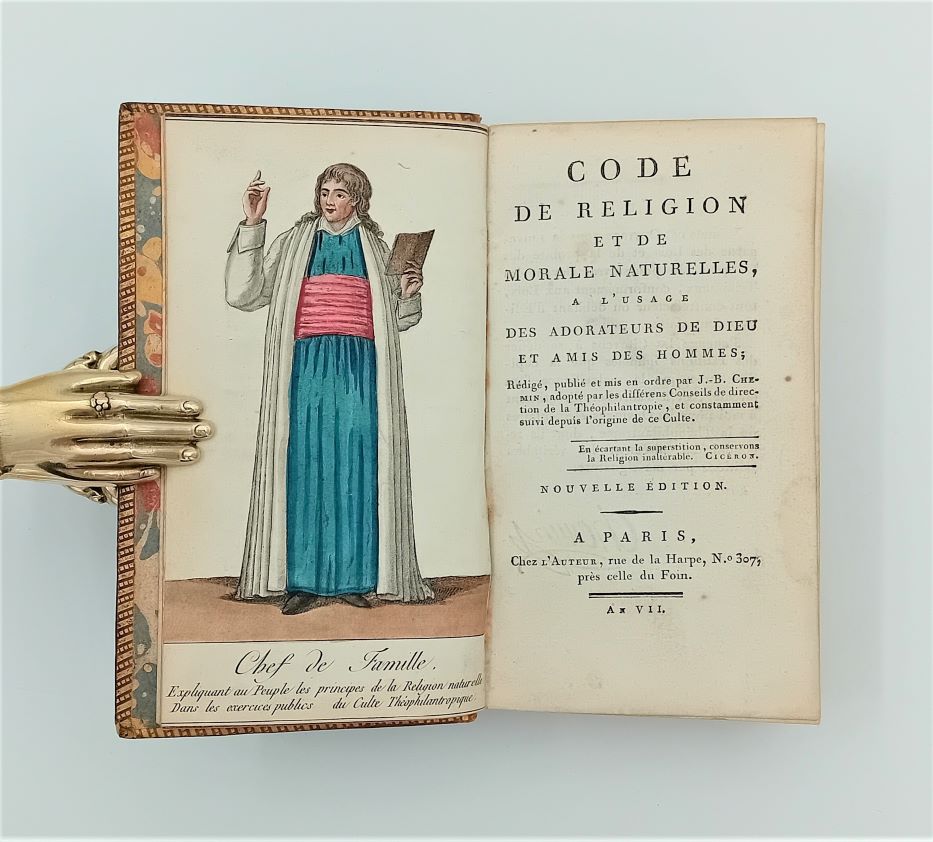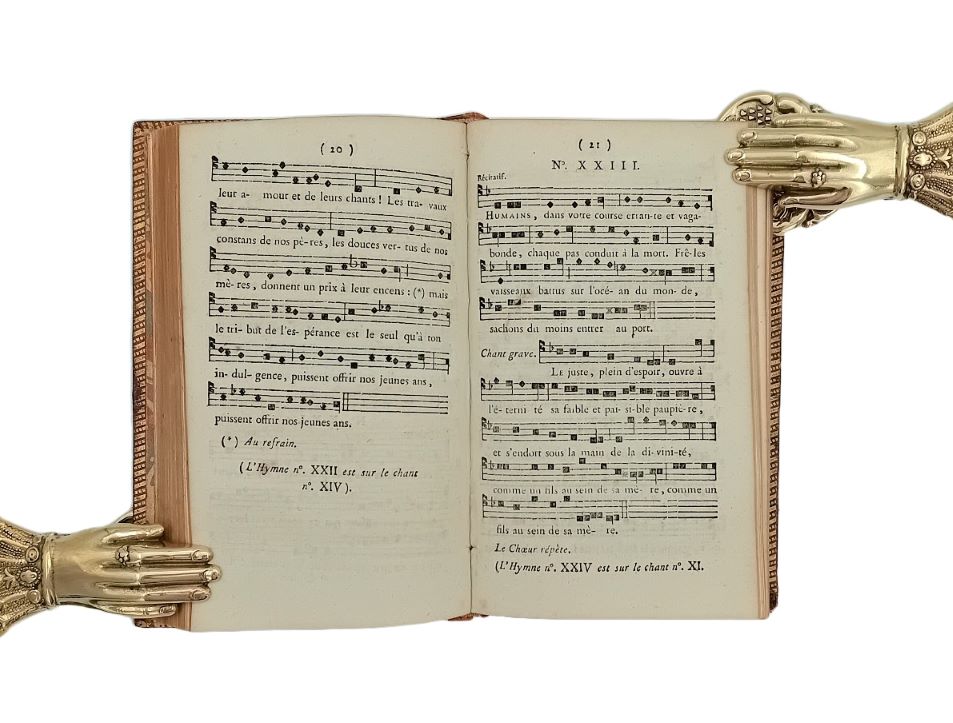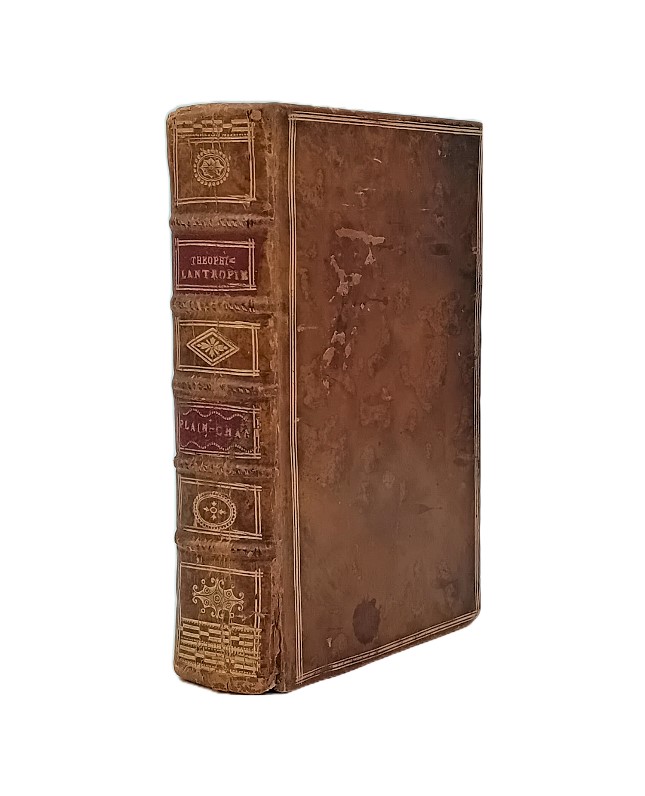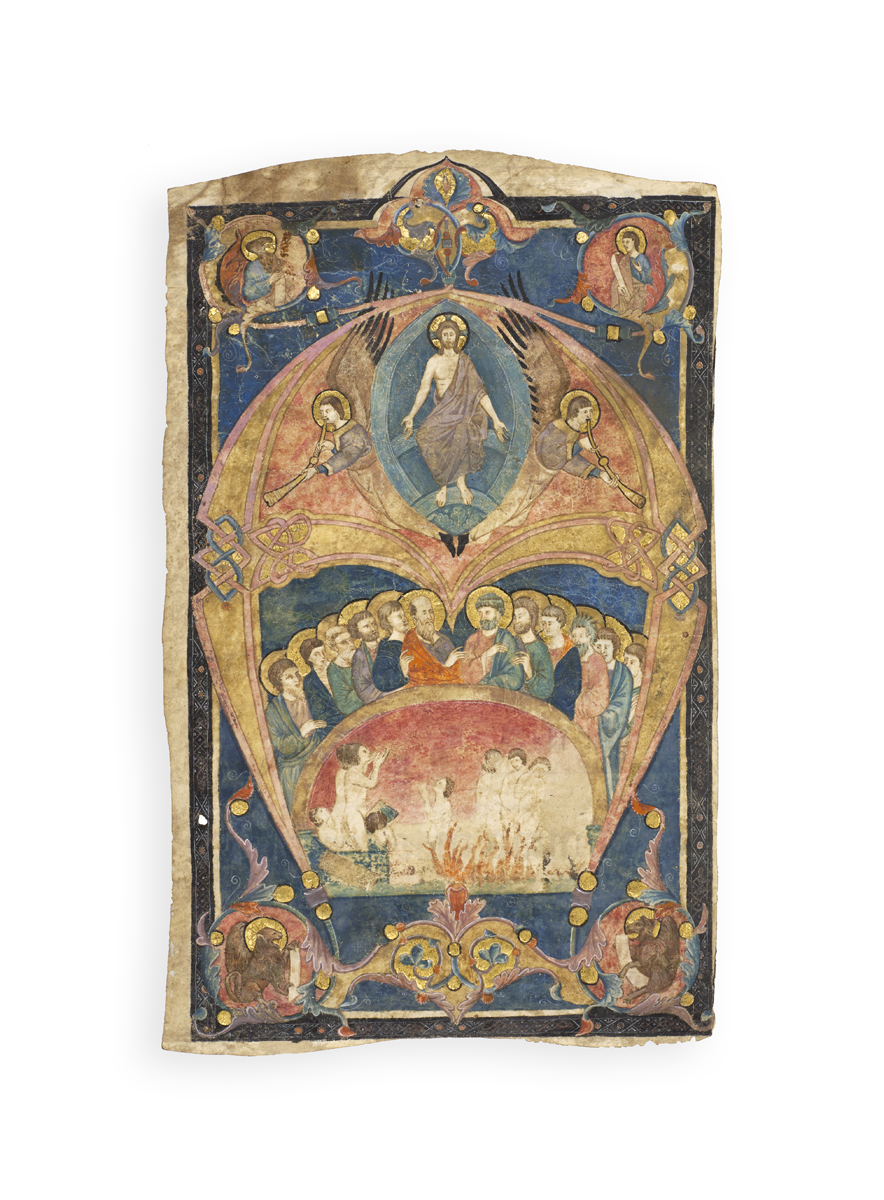


Theophilanthropist’s Handbook
CHEMIN-DUPONTÈS, Jean-Baptiste.
Code de religion et de morale naturelles, a l’usage des adorateurs de Dieu et amis des hommes; rédigé, publié et mis en ordre par J.-B. Chemin, adopté par les différens conseils de direction de la théophilantropie, et constamment suivi depuis l’origine de ce culte. Nouvelle édition.
Paris, chez l’auteur, an VII [1798-1799].
2 parts in 1 vol., 12mo, pp. xxiv, 186, 24 (music), 187-264, with hand-coloured engraved frontispiece showing a ‘Chef de famille’; x, 384; both parts with facsimile signature of Chemin to verso of title-page; paper flaw to fore-edge of part 1 pp. 123-124, occasional spotting; very good in contemporary mottled calf, spine gilt in compartments with two gilt red morocco lettering-pieces (‘Theophilantropie’, ‘Plain-chant’), triple gilt fillet border to covers, gilt turn-ins and edges, marbled endpapers; upper joint split at foot, some wear to extremities and rubbing to covers.

Added to your basket:
Code de religion et de morale naturelles, a l’usage des adorateurs de Dieu et amis des hommes; rédigé, publié et mis en ordre par J.-B. Chemin, adopté par les différens conseils de direction de la théophilantropie, et constamment suivi depuis l’origine de ce culte. Nouvelle édition.
A nice copy of this remarkable two-part handbook for members of the short-lived French Revolutionary deistic religious cult known as Theophilanthropy, compiled by its founder, the Parisian publisher and bookseller Jean-Baptiste Chemin-Dupontès (1760-1852).
Drawing inspiration chiefly from Voltaire and Rousseau, Chemin-Dupontès established Theophilanthropy in 1796 with his Manuel des Théophilantropes. While the cult had little appeal to the masses, it did attract a mix of scientists, politicians, and artists, and was supported by the Directory, sharing with other cults the use of Notre-Dame cathedral and numerous Parisian churches. By 1799 however it was in steep decline, and in 1802 the cult was prohibited.
The Code comprises three parts, Manuel des adorateurs de Dieu et amis des hommes, Instruction élémentaire sur la morale religieuse, and Rituel contenant l’ordre des exercices de la Théophilantropie, each of which had previously appeared separately. The Manuel sets out the Theophilanthropist creed (love God, cherish each other, serve the fatherland etc.); the Instruction is the cult’s catechism, arranged in question and answer format, covering morality, religion, duty, love, gentleness etc.; and the Rituel consists of hymns, devotions, and discourses, and includes a 24-page musical supplement of ‘Plain-chant’.
The Morale des sages which follows collects wisdom from, for example, the Bible, Zoroaster, Confucius, Socrates, Cicero, Jesus and his disciples, Seneca, Marcus Aurelius, the Quran, William Penn, Fénelon, Voltaire, Benjamin Franklin, and Rousseau.

